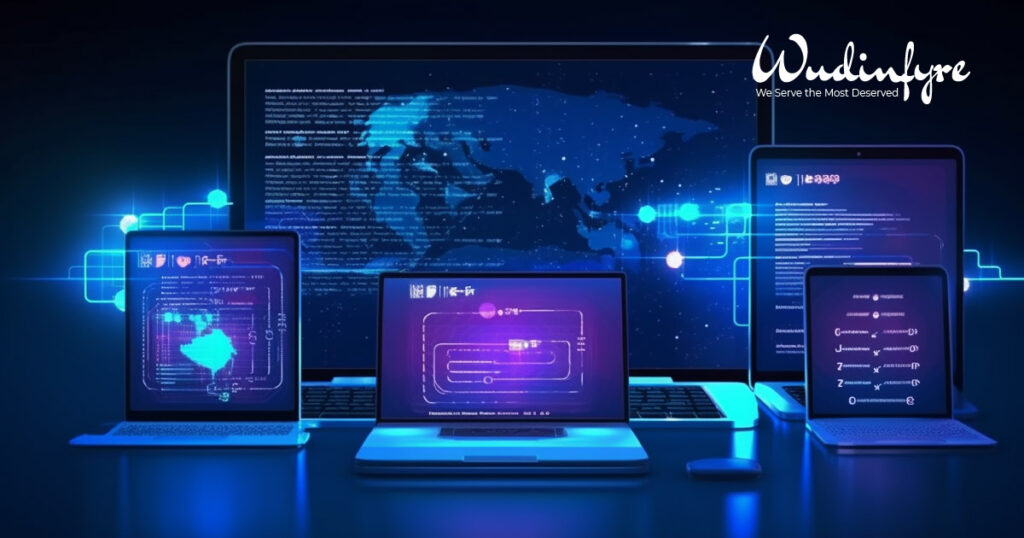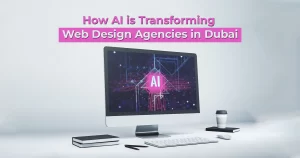There are millions of companies in the world, and every day new ones are being registered. And since making a website is as easy as plug-and-play with templates and online tools like Wix, it is always difficult to stand out. However, this readymade website development game doesn’t yet follow the latest trends in web development, which demand constant adaptation and innovation to attract visitors.
In this blog, we will explore the 10 hottest web development trends for 2023 that will shape the future of web design and development. Whether you are a business owner looking for a Website development Dubai, or a web developer looking to upgrade your skills, these trends will help you stay ahead of the curve and deliver outstanding web solutions.
1. Progressive Web Apps (PWAs)
Progressive web apps (PWAs) are web applications that combine features of native apps and websites. It is like using dedicated applications but they run in your browser. This makes them fast and reliable, offering a seamless user experience across different devices. PWAs can work offline, send push notifications, access device hardware, and load instantly, even on low-bandwidth networks. According to a report by HubSpot, PWAs can increase conversion rates by up to 36%, reduce bounce rates by up to 42%, and improve page load times by up to 10 times. Some of the popular examples of PWAs are Twitter, Pinterest, Uber, and Starbucks.
2. AI Chatbots
AI chatbots are software programs that use artificial intelligence (AI) to simulate human conversations and provide customer service, support, or guidance. They understand natural language, learn from user feedback, and provide personalized and relevant responses. AI chatbots help businesses save time, money, and resources, as well as improve customer satisfaction and loyalty. According to a survey by LambdaTest, 80% of businesses plan to use chatbots by 2023, and 67% of consumers prefer chatbots over human agents for quick queries.
3. Accelerated Mobile Pages (AMP)
Accelerated mobile pages (AMP) are web pages that are designed to load faster and perform better on mobile devices. AMP is an open-source framework that uses HTML, CSS, and JavaScript to create lightweight and optimized web pages that can load in less than a second. AMP can improve user experience, SEO ranking, and conversion rates, as well as reduce bounce rates and data consumption. According to Google, AMP pages can load up to four times faster and use 10 times less data than non-AMP pages.
4. Single-Page Application (SPA)
Single-page application (SPA) is a web application that loads a single HTML page and dynamically updates the content without reloading the page. SPA uses JavaScript frameworks such as React, Angular, or Vue to create interactive and responsive web pages that offer a smooth and seamless user experience. SPA can improve performance, usability, and user engagement, as well as reduce development time and cost. Some of the popular examples of SPA are Gmail, Facebook, Netflix, and Airbnb.
5. Voice Search Optimization
Voice search optimization is the process of optimizing a website for voice-based queries. Voice search is becoming more popular and convenient among users who use voice assistants such as Siri, Alexa, or Google Assistant to search for information or perform tasks. It can help businesses reach more potential customers, increase traffic, and enhance brand awareness. Juniper Research predicts that revenue from voice-based ads could touch $19 billion by 2023.
6. WordPress Development
WordPress powers over 40% of all websites and this makes it the most popular content management system (CMS) too. It offers thousands of themes, plugins, and extensions that can customize and enhance the functionality and appearance of any website. WordPress design and development is one of the most in-demand skills in the web development industry, as WordPress can be used for various purposes such as blogging, e-commerce, portfolio, news, education, etc.
7. E-commerce Website Development
E-commerce website development is the process of creating an online store that allows users to buy or sell products or services over the Internet. It is one of the most lucrative and competitive fields in web development, as e-commerce is growing rapidly across the globe. Statista reports that global e-commerce sales may reach $6.5 trillion by 2023. Ecommerce website development requires skills and technologies like HTML, CSS, JavaScript, PHP, MySQL, WooCommerce, Shopify, Magento, etc.
8. Motion UI
Motion UI is a web design trend that uses animations and transitions to create dynamic and engaging web pages. It can help attract user attention, convey information, guide user actions, and enhance user experience. Motion UI can be implemented using CSS, JavaScript, or libraries such as GSAP, Anime.js, or Lottie. Motion UI can be used for various purposes such as loading screens, navigation menus, sliders, buttons, cards, etc.
9. Serverless Architecture
Serverless architecture is a web development trend that allows developers to run and scale applications without managing or maintaining servers. It uses cloud services such as AWS Lambda, Google Cloud Functions, or Azure Functions to execute code on demand and charge only for the resources used. Serverless architecture can help developers save time, money, and resources, as well as improve performance, reliability, and security.
10. Dark Mode
Dark mode is a web design trend that uses dark colors and shades to create a contrast between the background and the content. It can help reduce eye strain, save battery life, and improve visibility in low-light conditions. Dark mode can also create a sleek and modern look for any website. Dark mode can be implemented using CSS media queries or JavaScript to detect the user’s preference or system settings.
If you are looking for an agency that offers web development in Dubai, Wudinfyre is here for you. We are a web design and digital marketing agency that specializes in WordPress design and development, ecommerce website development, SEO, PPC, social media marketing, and more.



